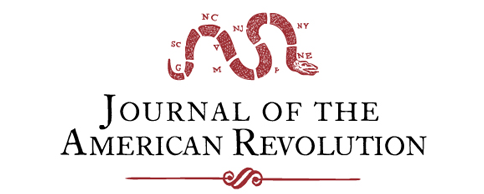Located far enough away from American-controlled Kentucky but enough close to the British-allied Native Americans in the Western Great Lakes region, Fort Detroit became the center for British military operations to counter American activities in present-day Kentucky, Indiana, and Ohio during the American Revolutionary War. These operations included raids on American settlements as well as attempts to align Native Americans with British war efforts. American political and military leaders soon realized that by gaining of control of the Fort Detroit region they could minimize British influence over the Native Americans over a wide area. Virgina Governor Patrick Henry assigned George Rogers Clark, lieutenant colonel of Virginia troops in Ohio and Kentucky, this responsibility.[1] To gain information on British plans as well as to disrupt those plans, Clark and other Americans recruited inhabitants at Fort Detroit and the surrounding region as American spies and agents.[2]
As the war progressed, the British military became aware of the American spies and sympathizers at Detroit. To deter covert operations and identify real or potential spies, the British commander of Detroit, Lieutenant Governor Henry Hamilton, issued orders on August 23, 1777 stating that all strangers entering Detroit, and any suspicious activity, must be reported immediately to military authorities.[3] The British command soon realized, however, that internal threats also existed within the Detroit region.
One obvious group the British military suspected were the region’s French-Canadian residents, called Habitants. Although the British assumed control of Detroit in 1760, the Habitants still comprised the largest European-ethnic group the Detroit settlement. With their participation in the fur trade in the Western Great Lakes region and westward, many Habitants and Native Americans maintained strong relationships with each other. Throughout the war, the British military and Indian Department remained suspicious of these two groups’ relationships and the Habitants’ actual support of the British war cause. The Habitants’ suspected lack of loyalty constantly worried Lieutenant Governor Hamilton. He wrote his commanding officer, Gen. Frederick Haldimand, in mid 1778 that he believed “there is but one in twenty [French habitants], whose oath of allegiance would have force enough to bend him to his duty.”[4] Captain Richard Lernoult, who succeeded Hamilton at Detroit, reported in April 1779 that the habitants refused to assist British efforts.[5] This concern remained true for successive British commanders of Detroit throughout the war.[6] Clark himself even wrote in November 1779 that the “greatest part of the French Gent and Traders among the Indians” at Detroit expressed support in their communications with their counterparts in the Illinois region.[7]
The British also realized that even some British subjects in the Detroit region supported the American cause. Hamilton reported that he had came to suspect some unnamed British traders who “are rebels in their hearts.”[8] In August 1778, Lieutenant Governor Hamilton wrote Lieutenant Governor Hector Theophilus Cramahé that “The disposition of the [British] people at this place requires something more than the shadow of authority to keep them in the Bounds of Duty.”[9] In a latter letter, Hamilton wrote, “as to my knowledge the Enemies of the Crown are suppl’d or have been from this place, proofs of which I am possess’d of.”[10] British military commanders succeeding Hamilton had similar thoughts and concerns, which were not unfounded. For example, George Rogers Clark in 1779 received a report that only “three and not many more” British citizens “were true to the British Cause” at Detroit.[11]
In February 1779, Colonel Clark’s troops captured Post Vincennes (present day Vincennes, Indiana) as well as Lieutenant Governor Hamilton and the troops and Native Americans under his command. The defeat further encouraged American supporters at Detroit in their actions against the British war efforts at Fort Detroit.[12] This included convincing both the habitants and Native Americans to remain neutral if not to outright support the American cause. As a result, Lt. Col. Mason Bolton, commander of Fort Niagara, wrote General Haldimand, governor of the province of Quebec, that Capt. Richard Lernoult, the new British commander in Detroit, “has very little hopes of any assistance from either the Canadians or Indians. The latter are particularly industrious in debauching the minds of the former, and have succeeded too well.”[13]
While all the names and even the number of American spies in Detroit remains unknown, Clark did reveal in a letter one source of new American spies and sympathizers at Detroit. He reported that after the capture of Post Vincennes, he had a large number of “Volunteer Inhabitants of Detroit” as prisoners. Since guarding and sustaining them in captivity proved difficult, he released the volunteers and allowed them to return to Detroit. As part of their release, the prisoners were required to take an oath of neutrality. Clark wrote that he hoped this good treatment would encourage the former volunteers to become supporters of the American cause. Evidently, some accepted this arrangement, and they left Post Vincennes “huzzaing for the Congress and declared though they could not fight against the Americans,” they would support them. After that, Clark reported that he had spies constantly at Detroit, and they served every “possible purpose.” He concluded in his report that “Many of them has paid dear for it since.”[14]
In response to this new threat, in June 1779 General Haldimand authorized Captain Lernoult to apprehend anyone that directly or indirectly aided the Americans and their allies, including by providing provisions or intelligence. Haldimand also directed Lernoult to transfer those prisoners to either Fort Niagara or Carleton Island. Additionally, the general ordered that “it is your duty to require and obtain from all Persons of doubtful character, such Hostages as may effectual prevent them, or any part of their family from taking an active part against His Majesty’s Government or Troops under your Command.”[15]
Captain Lernoult immediately put his new authority into effect. John Cassedy and William Boslick, both Detroit area farmers, were quickly arrested for treason, and on July 20 and 21 they were put on trial. During the trial, Henrick Ingo, a recruit in a British ranger company, stated that he heard William Bostick and John Cassedy speak “in a very rebellious manner against the Government.” In addition, Ingo testified that Cassedy and Boslick said the Virginians would be in Detroit shortly, and they would not sell their leathers until that happened.[16] William Miller, a ship carpenter, stated that Cassedy and Boslick drank success to Congress and the American army. Miller also repeated Ingo’s claim about Cassedy and Boswell selling leather to Americans.[17] Two other men, John Langhton and John Cornwell, presented similar evidence; Cornwell also stated that Boslick pressed him for information regarding Col. John Butler and his Rangers’ latest military actions. John Langhton, a Naval store keeper, testified that Cassedy said he would be placed in charge of the new American government of Detroit when Americans gained control in six months.[18]
On July 25, Captain Lernoult issued orders to arrest Jeremiah Cochran, “Bonavanture Trouvant,” and Thomas Wiggins. The orders also included seizure of “all their effects.” Cochran was a hatter in Detroit; Wiggins and Trouvant were identified as fur traders. Trouvant was further identified as a “French man from Vincennes.”[19] In his testimony on July 28, John Cornwall accused Cockran, Wiggins, and Trouvant of treason. Cornwall stated that as he sat in a tavern with the three accused men, Wiggins made a toast to the United States and wished the Americans would soon be in Detroit. When Cochran asked Wiggins why he thought so, Wiggins replied he recently had been at Vincennes, and he had been in communication with the Americans there. Trouvant was also accused of working with the Americans at Vincennes, which the British long suspected him of doing.[20]. Evidently, Cochran’s testimony was strong enough to convict Trouvant—six days after Cornwall’s testimony, Captain Lernoult ordered Trouvant’s goods seized, to the amount of 446 Pounds, 10 Shillings, and two pence.[21]
Colonel George Rogers Clark’s agents also encouraged American prisoners from Kentucky held at Fort Detroit to escape. John Higgins and William Humphreys were two prisoners that fled Detroit but were later re-captured by British-allied Native Americans. In their trial, both Higgins and Humphreys stated Israel Ruland and John Edgar assisted in their desertion. In his deposition, Higgins stated that Edgar provided bread, knives, and ammunition to Higgins and others as well as giving directions on how to travel to the Native American encampment called Miami Town. While at Miami Town, they met Israel Ruland, who encouraged Higgins to follow him, presumably to American occupied territory. Higgins additionally stated Ruland possessed several letters from George Rogers Clark.[22] According to Humphreys’ testimony, Ruland promised Humphrey and others three muskets if they would desert. The next day, Humphreys and his comrades traveled to John Edgar’s house. Humphreys stated that, while there, he and others received “four loaves of bread, Powder, lead, and some Sugar, as likewise Breech Clothes & Leggins.” Edgar took care of their old clothing, and Ruland directed them towards Miamitown, where Humphreys was also eventually captured. Ruland told Humphreys that he received a dollar per day from Clark for this type of work. Humphreys also implied that Edgar and presumably Ruland assisted three other British soldiers in their desertion in the Spring.[23] Ruland successfully escaped British authorities and safely arrived at Post Vincennes. Edgar, however, was captured, imprisoned and charged with “aiding and assisting prisoners to make their escape at Detroit.”[24]
Although diminished, support for the American cause persisted in Detroit in 1781.[25] Major Arent De Peyster, commandant at Detroit, wrote to the commanding officer in Montreal: “I am sorry to say that the Canadians are not to be depended upon, I therefore cannot make any considerable detachment from this Garrison.” Major De Peyster then reported that he was sending east “some Canadians,” and the next ship from Fort Detroit would contain “some who are rather dangerous People in this settlement,” but did not identify those “dangerous people.”[26] In the same year, Alexander McKee, a British merchant at the “Upper Shawnee Village,” wrote to De Peyster that “a Shawnee Indian arrived at the lower village who is supposed to be a spy from the Rebels he was accompied from Post Vincent [Vincennes] by two Frenchmen suspected to be upon the same errand.” McKee wrote that one of the Frenchman had gone to Detroit and was carrying letters from the Americans.[27]
American spies remained active in the Detroit region through 1782.[28] That March, American spies at Fort Detroit informed Gen. George Rogers Clark of planned Native American raids from Detroit into Kentucky.[29] Valentine Thomas Dalton, a former prisoner at Detroit, wrote to Clark in October that several Detroit merchants appeared to favor the American cause, specifically naming the merchants “Gravrod” and “Forsyth.”[30]
The above examples represent just documented reports of American sympathizers’ interference against British military and government at Fort Detroit. How much effect this had on the British war effort in the West is difficult to determine, but evidence suggests that it did hamper the British efforts to some degree. The various British commanders at Fort Detroit were aware of the Americans and their potential threats. The commanders communicated their concern to their commanding officers, held court-martials, seized suspected Americans, and transported them out of the Fort Detroit region.
[1] www.battlefields.org/learn/biographies/george-rogers-clark.
[2] George Rogers Clark to George Mason, November 19, 1779, “George Rogers Clark Papers 1771-1781,” Illinois State Historical Library Vol. 8 (1912):146.
[3] Orders, August 23, 1777, Henry Hamilton Papers, Clarence Burton Historical Collection, Detroit Public Library.
[4] Henry Hamilton to Frederick Haldimand, undated, circa August 1778, Michigan Pioneer and Historical Collection no. 9 (1886): 465.
[5] Richard Lernoult to Mason Bolton, March 26, 1779, Michigan Pioneer and Historical Collection no. 10 (1888): 328.
[6] Clark to Patrick Henry, April 29,1779, “George Rogers Clark Papers 1771-1781,” 172; Haldimand to George Germain, September 14, 1779, Michigan Pioneer and Historical Collection no. 10 (1888): 361; Haldimand to Arent De Peyster, August 10, 1780, ibid., 417.
[7] Clark to Mason, November 19, 1779, “George Rogers Clark Papers 1771-1781,” 131.
[8] Hamilton to Haldimand, undated, circa August 1778, Michigan Pioneer and Historical Collection no. 9 (1886): 465.
[9] Hamilton to Hector Cramahé, August 12, 1778, ibid.: 462.
[10] Hamilton to Haldimand, undated, circa August 1778, ibid.: 468-9
[11] Leonard Helm to Clark, May 21,1779, “George Rogers Clark Papers 1771-1781,” 324.
[12] Clark to Mason, November 19,1779, ibid., 131.
[13] Bolton to Haldimand, May 20, 1779, Michigan Pioneer and Historical Collection no. 19 (1891): 415.
[14] Clark to Mason, November 19,1779, “George Rogers Clark Papers 1771-1781,” 146.
[15] Haldimand to Lernoult, June 13, 1779, Michigan Pioneer and Historical Collection no. 10 (1888): 338.
[16] “Deposition of Henrick Ingo,” July 21, 1779, Michigan Pioneer and Historical Collection no. 10 (1886): 343.
[17] “Deposition of William Miller,” July 21, 1779, ibid.:344-5.
[18] “Deposition of John Langthon,” July 21, 1779, ibid.:343-4, “Deposition of John Corwall,” July 21, 1779, ibid.:345.
[19] “25 July 1779,” Thomas Williams Papers, Burton Historical Collection, Detroit Public Library.
[20] “Deposition of John Corwall,” July 28, 1779, Michigan Pioneer and Historical Collection no. 10 (1886): 346-7.
[21] “3 August 1779,” ibid.: 353.
[22] “Deposition of John Higgins,” July 23, 1779, ibid.: 355-6.
[23] “Deposition of William Humphreys,” July 23, 1779, ibid.: 356.
[24] Allan MacLean to Robert Matthews, December 4, 1780, Michigan Pioneer and Historical Collection 19 (1892): 585.
[25] “Plan for Kentucky Defense,” December 11, 1781, “George Rogers Clark Papers 1781-1784,” Illinois State Historical Library 19 (1926): 15.
[26] De Peyster to Powell, March 17, 1781, Michigan Pioneer and Historical Collection 19 (1892): 601.
[27] Alexander McKee to De Peyster, July 15, 1781, ibid., 648.
[28] “Plan for Kentucky Defense,” December 11, 1781, “George Rogers Clark Papers 1781-1784,” 14.
[29] Clark to Joseph Lindsay, March 5, 1782, “George Rogers Clark Papers 1781-1784,” 43.
[30] “British Plans for Campaign of 1782, Valentine Dalton to Brigadier General George Rogers Clark,” ibid., 147.





Recent Articles
Entangled Alliances: Racialized Freedom and Atlantic Diplomacy During the American Revolution
Videau’s Bridge: An American Disaster After Yorktown
This Week on Dispatches: Geoffrey Hoerauf on American Spies around Fort Detroit
Recent Comments
"A Curious Agreement Among..."
Mr. Ness, I would love to have a copy of that list....
"Unraveling the Mystery of..."
This is superbly researched and I think you perfectly settled the matter....
"The New Dominion: Virginia’s..."
Thanks, Eric! There's more to come on this. Three generations of my...